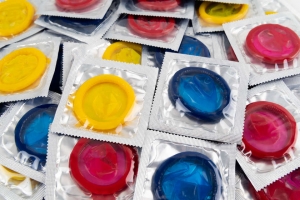Most people think they know how to use a condom, but make mistakes that easily compromise the effectiveness of this method of contraception. If simple precautions are neglected during oral, anal and vaginal sex, the risk of sexually transmitted infections and unwanted pregnancies is very real.
You should know one important aspect that unites many sexually transmitted diseases - this is their asymptomatic course, at least in the first phase. In practice, without experiencing any particular symptoms, the patient remains unaware of his condition for a long time. This fact clearly facilitates the transmission of the disease. To diagnose an STD, you can contact Bogoliuby Medical Center for this purpose .
Laboratory and epidemiological studies have shown that condoms are very effective in preventing HIV transmission and reducing the risk of other STDs, including those transmitted through contact of urethral or vaginal secretions with mucous membranes (eg, male urethra, vagina, or cervix). Examples are gonorrhea, chlamydia and trichomoniasis. HIV, syphilis, herpes, gonorrhea, HPV, trichomoniasis can also be transmitted during oral sex.
Of course, one must take into account the fact that the condom does not cover all infected areas, or areas that can become infected.
Remember that inconsistent use or failure to use condoms can lead to contracting an STD, since a single sexual intercourse with an infected partner is enough to infect.
Common Mistakes
If the condom is used incorrectly, the protective effect is reduced even with continued use (the condom may break and slip off). The most common mistake is not using a condom during the entire intercourse from the beginning (intercourse) to the end (after ejaculation).
The second mistake: the integrity of the condom packaging is not checked. A condom can easily be damaged, losing its effectiveness, from heat and friction in your wallet, purse, car glove compartment, or trouser pocket if it's been in there for more than a month or not properly stored. Therefore, it is not safe to use it.
If you press down on an intact condom wrapper, you should feel a small cushion of air and some lubrication (feeling that the wrapped condom slides through it to the touch).
Do not check the expiration date. If the date on the package has already passed, the condom is likely to break during intercourse. Never use an expired condom, as it is unreliable in terms of protection. Do not carefully open the package. Before opening the package, you should feel the rib of the condom and move it to the side so as not to damage it when the package breaks. This may seem like obvious advice, but it's very important not to open the package with scissors or sharp objects, including your teeth.
Put on a condom after starting intercourse. The condom must be put on before sex, in particular, before the genitals come into contact with the sexual organs of the partner. If a condom is put on before ejaculation, then the person will not be protected from STDs or from pregnancy, since there is a possibility of leakage of pre-eculatory fluid. Let us briefly recall that pre-ejaculate is a transparent and viscous secret that creates a suitable environment for the passage of the seminal fluid itself. Pre-ejaculate contains spermatozoa in small doses, so the risk of pregnancy is quite real.
Use of unsuitable lubricants: Oil-based lubricants will damage the latex. Using the wrong size condom - too big or too small.
If you share sex toys with your partner, it's helpful to use a new condom each time. Remember that sex toys can also transmit sexually transmitted diseases.



















